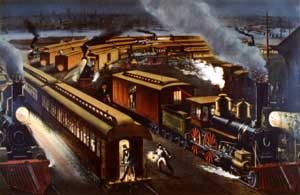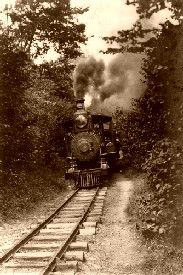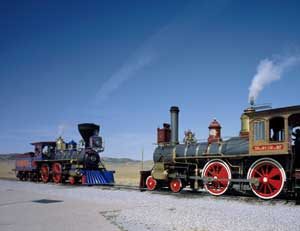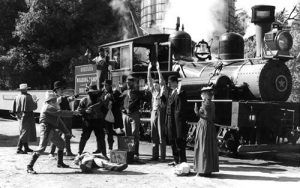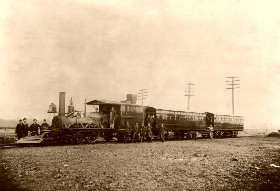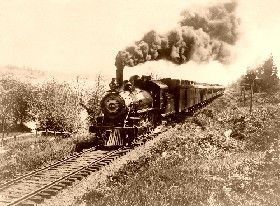Figuring prominently into every aspect of America’s history is the railroad. Involving ingenious entrepreneurs, armies of workers, and the ultimate conflicts with Native Americans and outlaws, railroad history and tales are yet another fascinating aspect of westward expansion.
A Century of Railroad Building
The Alpine Tunnel – An Engineering Marvel
Building Along The Santa Fe Trail
Frontier Era Time Capsule – Johnson Canyon Rail Tunnel
Harvey Hotels & Restaurants Along the Rails
Harvey Hotels & Restaurants on Route 66
Indian Troubles During Construction
Linking the Oceans By Railroad
Penetrating The Pacific Northwest
Original Pennsylvania Station – Gone Today
Railroad Quips, Quotes & Jokes
Railroads & Depots Photo Gallery
The Santa Fe Trail and the Railroad: 1865-1880
Railroad Tales:
An Encounter With Train Robbers
Bill Bradley, Gambler & Gentleman
Blue Field, Arizona & an Indian Scrimmage
The Phantom Train of Marshall Pass
By the 1830s, the nation realized the need to connect the East with the Pacific coast shortly after the railroads began large-scale operations. Howard Stansbury completed the first survey for a transcontinental railroad system in 1849-50 and surveyed a route through the Black Hills and south of Salt Lake City.
Further measures were taken in March of 1853 when Congress approved a survey by the War Department. Seeing the future, George Pullman began building sleeping cars as early as 1858.
But Congress would dally for another four years, debating the route the transcontinental railroad should be built, until finally, it approved the passage of the Pacific Railway Act in 1862, authorizing the Union Pacific Railroad’s westward expansion from Omaha, Nebraska, to Sacramento, California, and the Central Pacific Railroad’s eastward expansion from Sacramento, California. The act further provided loans for building the railroad and sections of public land, ultimately resulting in the railroad companies acquiring 33 million acres of free land.
Railroad building was slow when the Civil War began due to a lack of investors; however, construction began in earnest when the war ended.
The building of the railway required enormous feats of engineering and labor, including crossing plains and high mountains. Railroad workers also suffered from bad winters, desert heat, a lack of supplies, and Indian attacks.
On May 10, 1869, the two railroads met in Promontory Summit, Utah, joining 1,776 miles in a grand ceremony heralded as the “Golden Spike” celebration. It was perhaps the world’s first live mass-media event, as the telegraph lines buzzed with the event and photographers snapped hundreds of photos that would quickly appear in newspapers across the globe.
In no time, the railroad accelerated the population of the West, caused wagon trains to become obsolete, increased commerce in the nation, and contributed to the decline of Native Americans.
Railroad passengers first paid as much as $111 for first class from Omaha to Sacramento to $40 for the lowest class.
©Kathy Alexander/Legends of America, updated March 2025.
“RAILROAD, n. The chief of many mechanical devices enabling us to get away from where we are to where we are no better off. For this purpose, the railroad is held in highest favor by the optimist, for it permits him to make the transit with great expedition.”
– Ambrose Bierce
Another fun video from our friends at Arizona Ghostriders.


